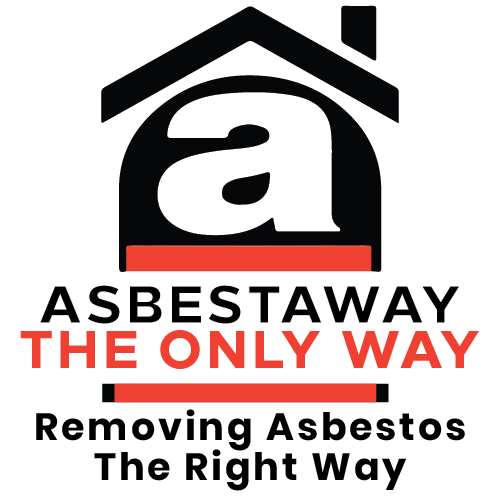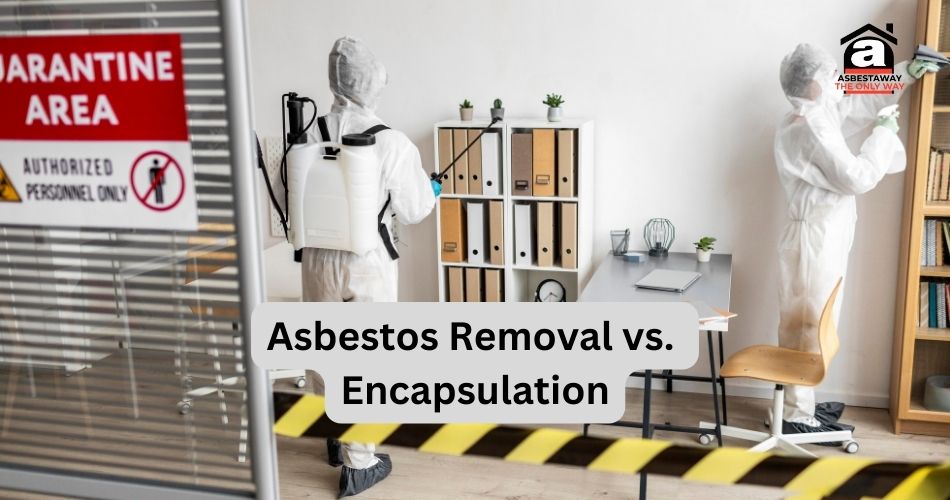A naturally occurring material named Asbestos was once considered to be a great material because of its durability and fire resistance properties. However with time, the same miracle material is now considered to be really dangerous for our health. So you might be thinking what made Asbestos so risky for our health. Well, it’s mostly because of the microscopic fibers present in asbestos that poses health risks. when inhaled it can cause serious illnesses such as lung cancer, mesothelioma, and asbestosis. The removal and encapsulation of asbestos therefore have become necessary in recent times considering the safety of occupants and the preservation of property“ Asbestos exposure poses a serious health risk. Approximately 4,000 Australians are expected to lose their lives each year due to asbestos-related diseases. Shockingly, this number is more than double the annual national road toll.”
What is Asbestos Removal?
Asbestos removal is basically identified as the process of identifying and safely eliminating asbestos-containing materials (ACMs) from a building or structure. For this a series of careful steps are involved which mainly requires specialized knowledge and necessary equipment. As it’s a very challenging and complex task that requires a lot of experience and expertise, hiring of asbestos requires a professional asbestos remover. This task becomes more safe and efficient as professionals are trained in identifying different types of asbestos, examining the extent of contamination, and deploying necessary techniques for a safe removal process.
Process of Asbestos Removal
As Asbestos Removal Process is not like eating a cheese cake, it’s definitely carried out with a lot of precision and care making sure that all the necessary steps are followed during the removal process.Here are some important steps that need to be followed during the procedure:
a) Inspection and assessment
The process of asbestos removal typically begins with an inspection and assessment phase. To identify the presence of asbestos across various areas of the building a thorough survey is conducted by the trained professionals. Samples are taken and sent to the assigned authorized laboratories for analysis.
b) Containment procedures
After confirming the presence of Asbestos, the next thing to implement is the containment procedures in order to prevent the spread of asbestos fibers during the removal process. In this process affected areas are sealed off with plastic sheeting and using negative air pressure systems. This is done to make sure that any released fibers are contained within the work area.
c) Removal techniques
Once the presence of asbestos is confirmed through the Containment procedures, water is carefully applied to the materials which is followed by a gentle disassembly. The main purpose of this process lies in making sure that the asbestos is safely eliminated from the building without releasing harmful fibers into the air.
Benefits of Asbestos Removal
Removing asbestos from buildings is very important because it helps keep people safe and healthy. Here are some reasons why getting rid of asbestos is a good idea:
a) Complete elimination of asbestos
When asbestos is removed from a building we can get rid of its every bit and piece. This ultimately helps to ensure that the air is no longer filled with the harmful asbestos fibres making the air safe and breathable for everyone.
b) Reduced long-term health risks
After the removal of Asbestos from a particular building, people will not be exposed to it anymore. This will gradually lower the chances of people getting sick with diseases like cancer in the near future. Prevention is always better than cure!
Drawbacks of Asbestos Removal
a) Costliness
Asbestos removal is an expensive process as it requires experienced people with special equipment. It’s the matter of life and death sometimes, so a lot of money is needed to get rid of its completely.
b) Disruption to occupants and property
During the process of Asbestos removal, people sometimes have to leave the building. Possibly a lot of noise and mess is also created. People, businesses, really have to temporarily move out of their settlements until the problem is fixed, making them in trouble.
What is Asbestos Encapsulation?
There is also a different way to deal with asbestos instead of removing it directly. Instead of taking it out, asbestos-containing materials are sealed or covered up to prevent the release of fibers. A special coating or material over the asbestos is put, making a barrier that stops the fibers from getting into the air.
Advantages of Asbestos Encapsulation
a) Cost-effectiveness compared to removal
Encapsulating asbestos is often cheaper than removing it completely because it doesn’t require as much work or special equipment. It’s like finding a cheaper way to fix a problem without having to spend a lot of money.
b) Minimized disturbance to building structure
Encapsulation doesn’t involve tearing apart the building like removal does, so it causes less disruption. It’s like fixing something without making a big mess or changing how things look too much.
Limitations of Asbestos Encapsulation
While asbestos encapsulation can be helpful, it also has its downsides. Here are some reasons why it might not be the best long-term solution:
a) Temporary solution
Encapsulation doesn’t get rid of asbestos permanently. It just covers it up, so it might need to be done again in the future. It’s like putting a bandage on a wound—it helps for a while, but it doesn’t fix the problem forever.
b) Continued monitoring and maintenance required
Even after encapsulating asbestos, it still needs to be checked regularly to make sure it’s not getting worse. Plus, sometimes the encapsulation material can wear off, so it needs to be maintained. It’s similar to taking care of a garden—one needs to keep an eye on it and do upkeep to keep it healthy.
Factors Influencing the Decision To Choose Asbestos Removal vs. Encapsulation
Choosing between asbestos or encapsulate depends on several factors. Here are some things to consider:
a) Severity of asbestos contamination
The decision between removal and encapsulation depends on how much asbestos is there and how dangerous it is. If there’s a lot and it’s spreading easily, removal might be the safest choice to protect everyone from harm.
b) Budget constraints
When deciding between removal and encapsulation, money matters. Removing asbestos can be expensive because it involves a lot of work and special equipment. If there’s not enough money available, encapsulation might be the more affordable option.
c) Future plans for the building
If there are plans to renovate or tear down the building in the future, it might be better to remove the asbestos now to avoid complications later on. Encapsulation could just be a temporary fix that needs to be undone later.
d) Regulatory requirements and guidelines
Laws and rules about asbestos safety could influence the decision. Sometimes, regulations require asbestos to be removed in certain situations to keep everyone safe and healthy. It’s important to follow these rules to make sure everything is done correctly.
Making The Decision For Choosing Asbestos Removal or Asbestos Encapsulation
When it’s time to decide whether to remove asbestos or encapsulate it, there are a few things to think about:
- Check how much asbestos there is and how dangerous it is.
- See if there’s enough money for removal or if encapsulation is a better option for your budget.
- Consider future plans for the building—will it be renovated or torn down?
- Check the rules and laws about asbestos to make sure you’re doing everything right.
How Can Asbestaway Help?
Asbestaway is a leading provider of professional asbestos removal and encapsulation services. With our team of highly trained specialists, we offer comprehensive solutions for managing asbestos in residential, commercial, and industrial properties. Asbestaway’s services include thorough inspections, safe removal or encapsulation techniques, and ongoing monitoring to ensure compliance with regulations and the safety of occupants.
With over 40 years of experience, our team is trained, licensed, and friendly. We promise to follow all the rules and make sure your job is done right, no matter how big or small.
Get in touch with us today for a free quote. When it comes to getting rid of asbestos, Asbestaway is the best way to go.
Conclusion
In conclusion, asbestos removal and encapsulation are crucial processes for ensuring the safety of occupants and preserving property. While removal offers complete elimination of asbestos and reduces long-term health risks, it can be costly and disruptive. On the other hand, encapsulation provides a cost-effective solution that minimizes disturbance to the building structure but requires continued monitoring and maintenance. Factors such as severity of contamination, budget constraints, future plans for the building, and regulatory requirements should be considered when making the decision between removal and encapsulation. By consulting with professionals like Asbestaway, property owners can make informed decisions that prioritize the safety and well-being of occupants.
Get in touch with us today for a free quote. When it comes to getting rid of asbestos, Asbestaway is the best way to go.

